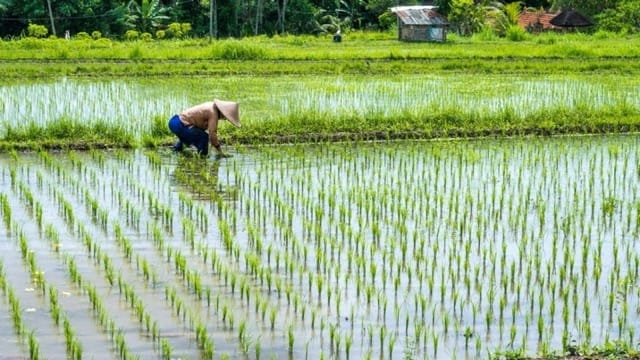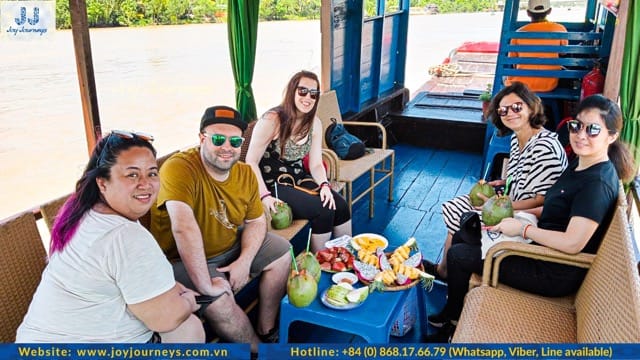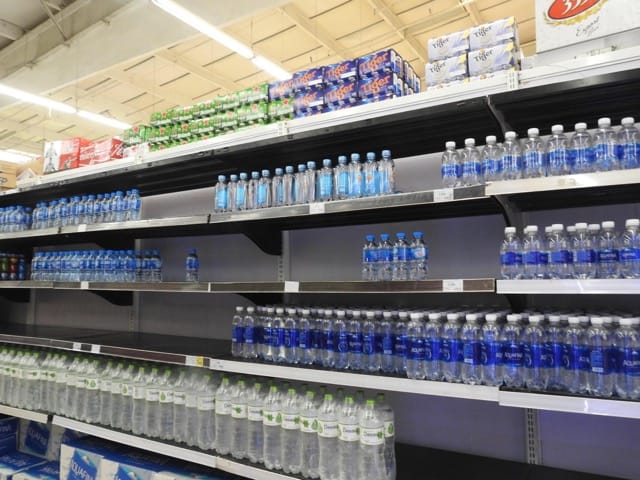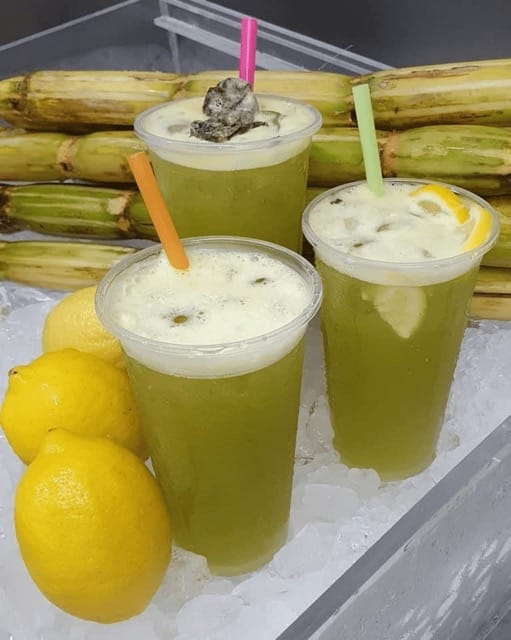When exploring the captivating landscapes and rich culture of Vietnam, prioritizing safe drinking water, such as Vietnam Water, is crucial. Protect your health, savor the journey, and stay hydrated as we delve into the importance of clean, potable water during your Vietnam travel.
Contents
Exploring the Cultural Significance of Water in Vietnam
Let us shall delve into the profound cultural importance of water within the tapestry of Vietnamese traditions and daily life. Additionally, we will scrutinize the concerted water conservation endeavors undertaken in Vietnam and advocate for responsible water utilization among travelers.
Water in Vietnamese Traditions and Daily Life
Water, as a symbol of vitality and affluence, enjoys paramount cultural significance in Vietnam. In the context of Vietnamese culture, water manifests itself in various aspects of daily existence. The ensuing elucidation unveils some salient facets of water’s cultural prominence:
- Rice Cultivation: Vietnam ranks among the world’s leading rice producers, and the cultivation of rice, a water-intensive crop, has been pivotal to the nation’s agriculture for centuries. It not only serves as sustenance but also symbolizes prosperity and abundance.

- Fishing: With an extensive coastline spanning over 3,000 kilometers, fishing has emerged as a fundamental livelihood for numerous Vietnamese communities. Fish, an integral component of the Vietnamese diet, embodies wealth and opulence.
- Water Puppetry: Water puppetry, an ancient art form indigenous to Vietnam, showcases narratives from daily life and legends via intricately designed puppets that maneuver upon the water’s surface. This art form underscores the profound cultural affinity with water.

- Spiritual Significance: Water occupies a central position in numerous Vietnamese religious rites and ceremonies. Temples and pagodas are often constructed in proximity to water bodies, underscoring water’s spiritual significance.
- Waterways: Vietnam’s landscape is interwoven with a network of rivers, canals, and deltas, serving as major conduits for transportation of goods and people alike. This intricate waterway system fosters community connectivity and cultural exchange.

Water Conservation Efforts in Vietnam
Notwithstanding its apparent abundance, Vietnam grapples with water-related challenges encompassing pollution and scarcity. The government, in tandem with various entities, has instituted substantial initiatives to ameliorate these issues:
- Wastewater Management: Urban areas in Vietnam have witnessed the implementation of wastewater treatment systems to mitigate water pollution. Travelers can support these endeavors by adopting responsible waste disposal practices and refraining from activities that compromise water quality.
- Rural Water Provision: Initiatives have been instigated to furnish rural communities with access to clean and safe potable water, thereby diminishing their reliance on potentially contaminated water sources. Travelers can contribute by endorsing these initiatives.
- Awareness Elevation: Educational campaigns aimed at promoting water conservation and judicious water utilization have been propagated across the nation. Travelers can contribute by acquainting themselves with local water conservation protocols and implementing them during their sojourn.
- Ecosystem Preservation: Conservation efforts geared toward safeguarding vital ecosystems, such as the Mekong Delta and coastal mangroves, serve to preserve water quality and biodiversity. Travelers can bolster these initiatives by patronizing responsible eco-tourism destinations.
Stay informed about sharks in Vietnam for a safe and responsible trip.
Promoting Responsible Water Usage Among Travelers
As conscientious travelers, it is incumbent upon us to extend due reverence and make constructive contributions to local culture and the environment. The ensuing recommendations proffer strategies for the conscientious exercise of water during visits to Vietnam:
Prudent Water Management: Exercise prudence in water consumption, whether in lodgings, dining establishments, or tourist sites. Pragmatic actions such as the judicious use of faucets and the limitation of shower durations can substantively reduce water wastage.
Mitigating Single-Use Plastics: Confronted by the global predicament of plastic pollution, travelers are advised to carry reusable water containers and source water from reputable outlets, thereby diminishing the demand for single-use plastic bottles.
Respect for Water Sources: When venturing into rural hinterlands, display deference to local water sources. Abstain from any activities that could pollute rivers or lakes and scrupulously adhere to directives and guidelines issued by local authorities.
Advocate for Sustainable Tourism: Opt for tour operators and accommodations that espouse ecologically sound practices and provide support to local communities’ water conservation endeavors.
In summation, water transcends its utilitarian aspect in Vietnam; it is, in fact, an embodiment of life, a source of prosperity, and an intrinsic cultural emblem. By recognizing and revering water’s significance in Vietnamese traditions, lending support to conservation initiatives, and embracing responsible water utilization practices, travelers can significantly contribute to the preservation of this quintessential element for posterity’s appreciation and reverence.
Exploring Vietnam’s Water Culture: The Safety of Tap Water
Vietnam, renowned for its cultural heritage and breathtaking landscapes, beckons travelers worldwide. Amidst the allure of this Southeast Asian nation, an important consideration is the quality of tap water and its safety for consumption. This article undertakes an assessment of tap water safety in Vietnam, addresses improvements and challenges within its water treatment systems, and proffers guidance to ensure tourists’ health during their sojourn.
The Quality of Tap Water in Vietnam
The safety of tap water in Vietnam exhibits regional disparities. Generally, urban locales are associated with more robust water treatment systems and, consequently, a higher assurance of safe tap water. Nevertheless, vigilance is imperative, and presumptions regarding tap water’s safety should not be made.
Advancements in Water Treatment Systems
Vietnam has undertaken commendable strides in enhancing its water treatment infrastructure, with pronounced improvements observed in major urban centers like Hanoi and Ho Chi Minh City. These enhancements aim to provide residents and visitors alike with water of elevated safety and purity.
The government has actively invested in upgrading water treatment facilities and optimizing distribution networks to align with international benchmarks. These endeavors encompass modernization initiatives, intensified water quality monitoring protocols, and the enforcement of stringent regulatory frameworks governing water management.
Challenges in Water Treatment Systems
Notwithstanding these commendable efforts, certain challenges persist, particularly in rural and remote regions. These areas may encounter limitations in accessing clean and safe tap water. Common predicaments include:
- Contaminants: Some areas contend with groundwater sources susceptible to contamination stemming from agricultural runoff or industrial activities.
- Infrastructure Obsolescence: Outdated water distribution infrastructure can engender leakages and losses during water conveyance.
- Variability in Water Quality: Urban localities may experience fluctuations in water quality due to variances in treatment procedures and maintenance regimes.
The Safety of Tap Water for Tourists in Vietnam
The suitability of tap water for tourists in Vietnam is a subject of deliberation. While commendable strides have been realized in numerous areas, it is generally prudent for tourists to abstain from consuming tap water as a precautionary measure against waterborne maladies. Local residents typically employ water boiling methods or employ water purification systems prior to consumption.
Recommendations and Prudent Measures:
- Opt for Bottled Water: The foremost and safest recourse for tourists is to avail themselves of commercially bottled water, widely accessible and economically viable. It is incumbent upon travelers to verify the integrity of the bottle seal to ensure the water’s purity.
- Utilize Filtered Water: Some lodging establishments and dining venues may offer filtered water that adheres to safety standards. It is incumbent upon patrons to ascertain the sufficiency of their filtration methodologies.
- Boiling as a Precautionary Measure: In circumstances where bottled or filtered water is unavailable, tap water can be rendered safe for consumption through rigorous boiling for no less than three minutes. Subsequent cooling should be observed prior to ingestion.
- Water Purification Measures: Carrying water purification tablets or portable filtration apparatuses facilitates the attainment of safe potable water, particularly when embarking on less-traveled routes.
- Exercise Caution with Ice in Beverages: While numerous establishments employ commercially manufactured ice that should meet safety standards, travelers can opt for beverages sans ice to exercise prudence.
- Hygiene for Consumables: When consuming uncooked fruits and vegetables, a diligent washing regimen utilizing purified or bottled water mitigates the risk of contamination.
In summation, despite laudable improvements in Vietnam’s tap water quality, tourists, especially in rural precincts, should remain circumspect regarding its safety. To ensure a harmonious and healthy journey through Vietnam, reliance upon bottled water, filtered water, or alternative potable sources is highly advisable.
Do not forget to prepare your Vietnam packing list with the must-have items.
Evaluating Bottled Water – Cost and Accessibility
In our comprehensive exploration of Vietnam’s water culture and the safety of tap water, we now turn our attention to the practical aspects of securing clean and safe drinking water. This section examines the cost of bottled water in Vietnam, provides insights into the variety of brands available, and discusses the accessibility of this vital resource across the country.
Bottled Water Prices and Budget Considerations
An essential consideration for travelers in Vietnam is the affordability of bottled water. Fortunately, this fundamental necessity is accessible to a broad spectrum of budgets. The cost of bottled water can vary based on brand, size, and location, yet it consistently remains an economically viable choice for ensuring safe hydration.
- Local Brands: Vietnamese brands such as “Lavie,” “Aquafina,” and “Vivian” offer cost-effective options. These brands provide high-quality bottled water at competitive and reasonable prices.
- Larger Water Bottles: When considering your water procurement in Vietnam, we highly recommend opting for larger water bottles. Purchasing larger-volume bottles not only ensures a more extended and convenient supply of clean drinking water but also often comes at a more economical price per liter. This choice is particularly advantageous for group travelers, extended trips, or anyone looking to reduce costs while staying adequately hydrated.
Accessibility of Bottled Water Across Different Regions
Vietnam’s geographical diversity is paralleled by the consistent availability of bottled water, ensuring travelers’ seamless access to this essential resource. While urban centers typically offer a wider selection of brands and sizes, rural areas provide dependable access, making bottled water consistently obtainable across the nation.
Major cities such as Hanoi and Ho Chi Minh City host an abundance of convenience stores, mini-marts, and supermarkets. These urban centers not only ensure accessibility but also present a diverse array of choices, encompassing both still and sparkling water options.
For travelers venturing into remote or less tourist-oriented regions, bottled water remains readily accessible, albeit with a somewhat more limited selection compared to urban counterparts. In these locales, local markets and modest retail establishments serve as reliable sources for acquiring bottled water.
Where Travelers Can Easily Procure Bottled Water?
- Convenience Stores: Well-established international chains like 7-Eleven and Circle K maintain a robust presence in Vietnamese cities and towns. These establishments offer a comprehensive range of bottled water options, often providing round-the-clock service.
- Supermarkets: Prominent supermarket chains such as Big C, VinMart, and Lotte Mart operate extensively in major urban areas. Travelers can expect to find a diverse selection of bottled water brands, as well as the convenience of purchasing in larger quantities.

- Street Vendors and Local Markets: Street vendors and local markets, especially prevalent in rural regions, serve as dependable and economical sources of bottled water. Travelers are advised to verify bottle seals to ensure product authenticity.
- Hotels and Restaurants: Most hotels and dining establishments in Vietnam offer bottled water for purchase by their guests. While prices may slightly exceed those of retail outlets, the convenience factor is undeniable.
In conclusion, the cost-effectiveness of bottled water in Vietnam, coupled with its wide availability, renders it an indispensable resource for travelers seeking clean and safe hydration.
Savoring Vietnamese Water-Based Delicacies
Vietnam, renowned for its diverse culinary heritage, presents an array of water-based beverages that engage the palate and provide respite from the tropical climate. This discourse embarks on a culinary journey through tra da (iced tea) and nuoc mia (sugarcane juice), shedding light on their flavor profiles, constituent elements, and regional differentiations.
Tra Da (Iced Tea)
Tra da, known as Vietnamese iced tea, exemplifies simplicity and purity. It is deeply ingrained in Vietnamese culture, constituting an integral facet of daily life, characterized by its artistic preparation and communal consumption.

- Flavor Attributes: Tra da emanates a gentle, revitalizing taste with a subtle undercurrent of bitterness. Green tea leaves, often infused with jasmine blossoms, constitute the principal ingredient, bestowing upon the brew a harmonious blend of earthy and floral notes.
- Ingredients: Essential constituents include green tea leaves and hot water. Occasional variations may incorporate a sliver of fresh lemon or kumquat for a citric dimension. Traditionally, condensed milk is introduced to confer a creamy sweetness to the tea.
- Regional Divergence: Tra da is a ubiquitous presence throughout Vietnam, characterized by variations in sweetness levels and preparation methods. The northern regions lean towards a milder sweetness, allowing the tea’s inherent purity to predominate. In contrast, the southern regions, influenced by a proclivity for sweetness, tend to render tra da with a more pronounced saccharine character.
Nuoc Mia (Sugarcane Juice)
Nuoc mia, or sugarcane juice, stands as a natural nectar that invigorates on Vietnam’s bustling streets. Derived from the verdant stalks of sugarcane, this elixir offers a burst of sweetness that resonates with both locals and visitors.

- Flavor Profile: Nuoc mia showcases a delightful natural sweetness with a subtle grassy undertone, proffering a rejuvenating experience akin to sipping liquid radiance.
- Ingredients: The primary constituent is freshly extracted sugarcane juice. Some vendors augment the flavor by introducing a dash of kumquat or calamansi juice. It is customary to serve the juice over ice for added refreshment.
- Regional Inflections: Nuoc mia enjoys national prominence, albeit featuring regional embellishments. In the Mekong Delta, for example, you may encounter variants incorporating coconut milk, culminating in a lush and sweet fusion known as “nuoc mia cot dua.”
Exploring Regional Specificities
Vietnam’s diverse topography and cultural fabric yield intriguing regional nuances in these cherished libations:
- Northern Austerity: In Hanoi and the northern realms, tra da leans toward minimalism. It is often devoid of sweetness or possesses a subtle sugaring, allowing the innate tea flavors to take center stage. Fresh mint leaves are occasionally included for added freshness.
- Southern Sweetness: The southern domains, encompassing Ho Chi Minh City, favor sweeter renditions of tra da, frequently suffused with the fragrances of jasmine or pandan leaves. In this region, tra da serves as an indulgent respite from the tropical climate.
- Diverse Nuoc Mia: The characteristics of nuoc mia diverge across Vietnam. In Saigon, it is often served with a squeeze of calamansi juice, while in the Mekong Delta, it may undergo fusion with coconut milk or even incorporate other tropical fruits for added complexity and richness of flavor.
Keep in touch with your friends and family during Vietnam trip with eSIM.
Conclusion
By responsibly engaging with Vietnam’s rich water culture, travelers can relish its culinary treasures while safeguarding their health and overall well-being. Prioritizing hydration and mindfulness ensures a gratifying and memorable sojourn through this culturally vibrant nation.
Frequently Asked Questions (FAQs)
Q1: Can you drink the water in Vietnam?
A1: It is generally not recommended to drink tap water in Vietnam. It is safer to consume bottled or filtered water due to variations in water quality and potential contaminants.
Q2: Can I brush my teeth with tap water in Vietnam?
A2: Using tap water for brushing teeth is generally considered safe in urban areas, particularly major cities like Hanoi and Ho Chi Minh City. However, those with sensitive stomachs may prefer using bottled water for oral hygiene.
Q3: How much is a bottle of water in Vietnam?
A3: The cost of bottled water in Vietnam varies depending on the brand, size, and location. On average, a 500 ml bottle of mineral water ranges from 5,000 to 10,000 Vietnamese Dong (approximately 22 to 44 US cents). Prices may be slightly higher in tourist-heavy areas.
Q4: Is it safe to drink water in Vietnam?
A4: While water quality has improved in urban areas, tap water safety can vary by region. It is generally considered safe to drink bottled or filtered water. It is advisable for travelers to prioritize their health and well-being by avoiding tap water to minimize the risk of waterborne illnesses.


Related Posts
Saigon’s “Flower Market Replica”: Where To Find Them
Ho Chi Minh City’s floral charm is not limited to its bustling wholesale markets. Imagine wandering through a place where vibrant petals, fragrant blooms, and the spirit of traditional Vietnamese markets come alive—without the overwhelming crowds. A flower market replica captures that magic, blending the beauty of fresh flowers with the charm of a curated, […]
Is it Safe to Travel to Vietnam Right Now? A Complete 2025 Guide
Vietnam has emerged as one of Southeast Asia’s most captivating destinations, drawing millions of visitors annually with its rich culture, stunning landscapes, and incredible cuisine. However, many travelers still ask: Is it safe to travel to Vietnam right now? This comprehensive guide provides you with everything you need to know about Vietnam travel safety in […]
Ho Chi Minh Cu Chi Tunnels Tour: The Ultimate Guide
The Cu Chi Tunnels stand as one of Vietnam’s most remarkable historical sites, offering visitors a profound glimpse into the ingenuity and resilience displayed during the Vietnam War. For travelers, a Ho Chi Minh Cu Chi tunnels tour represents an essential experience that combines education, adventure, and deep cultural understanding. This comprehensive guide will help […]